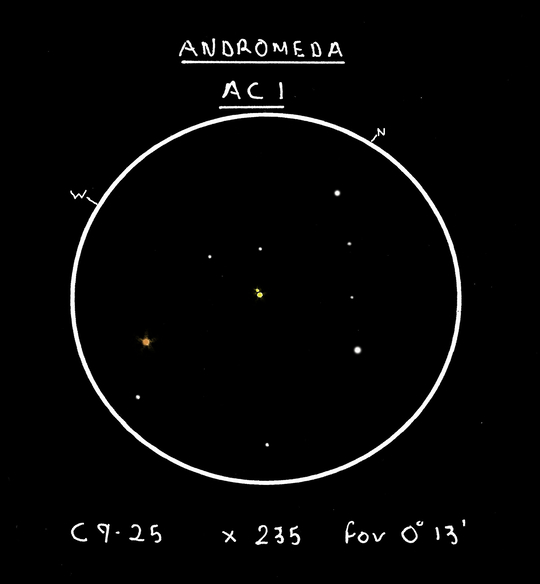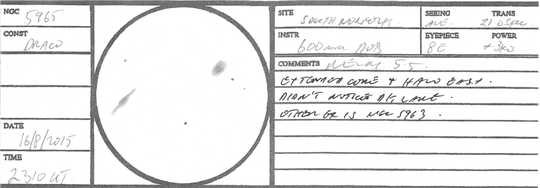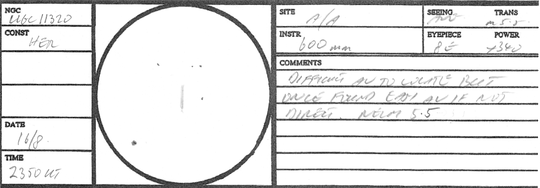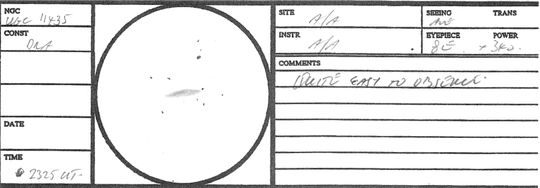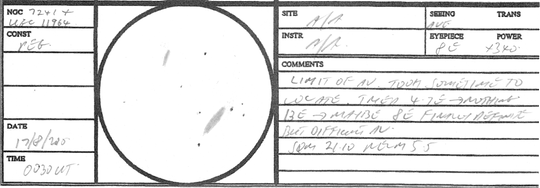These are our observations in Pegasus
-
Two Galaxy Groups in Pegasus
With this single colour shot of 1000 second exposure Richard has captured two galaxy groups.
The main feature is NGC 7331 to the right with the 'fleas' above it that make up the Deer Lick galaxy group. But below and to the left, about 30 arc-minutes away, you can just make out Stephan's Quintet (Arp 319) as well.
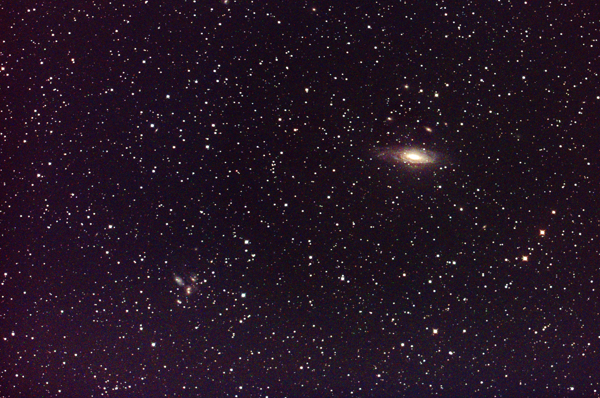
This image of the Deer Lick Group and Stephan's Quintet was provided by Richard Weatherley. Image Details
- Telescope: AG14 Orion F 3.8
- Camera: FLI Microline Camera
Richard Weatherley - (18 September 2020).
-
Messier 15 in Pegasus
Messier 15 is a bright and beautiful globular cluster in the constellation of Pegasus. It was discovered by the French astronomer Jean-Dominique Maraldi on 7th September 1746 and he reported it as a bright nebulous star composed of many stars. Messier observed it on 3rd June 1764 and added it to his list of 'not a comet' objects with the remark that it appeared as a round nebula, without a star. Other early observers included William and John Herschel and they commented on its brightness and unusual beauty.
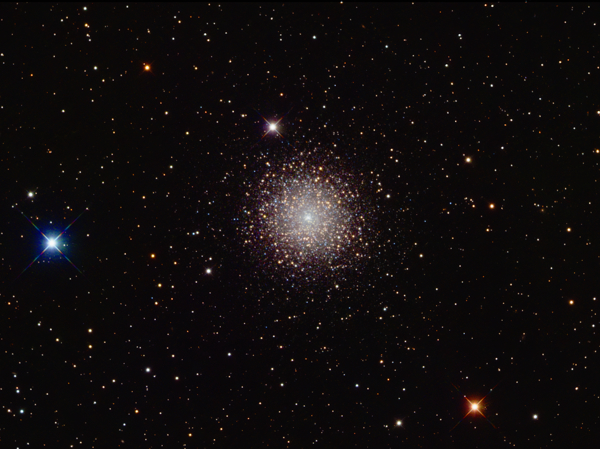
This image of the globular cluster Messier 15 was provided by David Davies and taken from Cambridge in the UK. To see more of David's work please visit his Flickr Photostream. Click on the image for the larger version. Image Details
I captured this image during the short darkness of 28th July as part of testing the imaging software N.I.N.A. It comprises just 10 x two-minute subs of red, green and blue sub-frames. The short exposures have ensured that the core is not over-exposed and the planetary nebula Pease1 can be discerned just north of the centre.
- Telescope: 8" Ritchey-Chretien with x0.7 reducer.
- Camera: QSI 683.
- Mount: Skywatcher EQ8.
David Davies - (20 August 2020).
-
Another Galaxy of the Month
I grabbed an opportunity last night despite the very milky sky to take a look at Owen's galaxy (NGC 7436), or rather galaxy group, of the month for November 2020. Despite the sky all members were seen (Ed. plus MCG +4-54-7 and MAC 2257+2606C) using the 505mm mirror and cooled Watec 120N+ video camera.
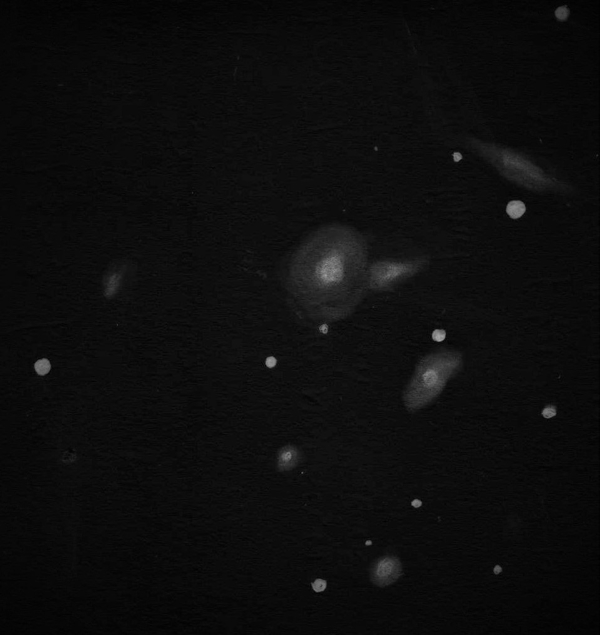
Sketch of the NGC 7436 group of galaxies by Dale Holt from his Chippingdale observatory in Hertfordshire. I then ticked a stunning Arp pair off my list in Aries: Arp 78, NGC's 772 and 770. Just stunning, sky was a little better in this region of the but still poor with haze.

Sketch of Arp 78 by Dale Holt from his Chippingdale observatory in Hertfordshire. Dale Holt - (19 November 2019).
-
NGC 52 in Pegasus
Here we have NGC52 in Pegasus, a first sketch of this object, nice fairly faint edge on with obvious dust lane running SE-NW. Circa 14th mag I believe, diameter 137,000 ly, distance 247mly.
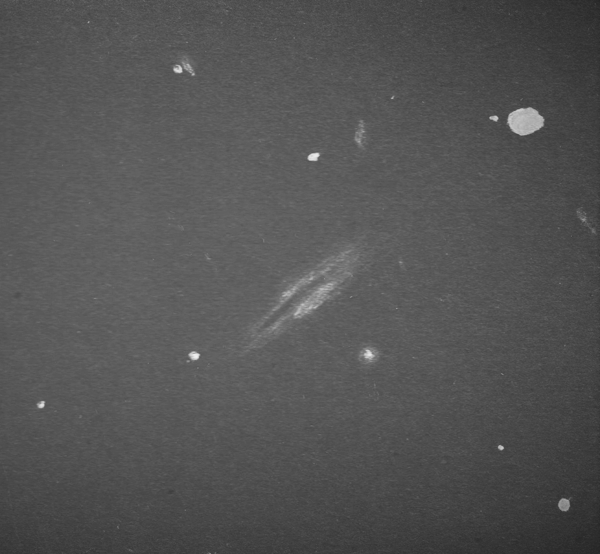
Sketch of NGC 52 by Dale Holt from his Chippingdale observatory in Hertfordshire. I made the sketch last night (24-10-19) using the 505mm mirror, cooled Watec 120N analogue video camera.
Dale Holt - (25 October 2019).
-
A Month of Arps in Pegasus
I got out in the observatory last night and made a sketch. I had not researched a target, just went for Pegasus galaxies. I sketched NGC 7549 which is a 13th magnitude stunner.
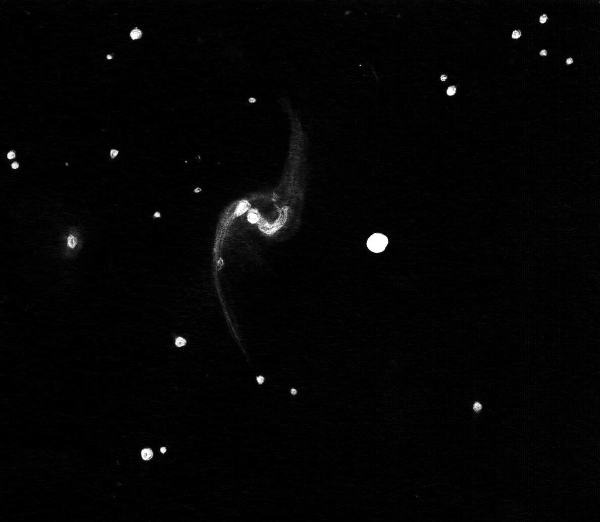
Sketch of NGC 7549 by Dale Holt from his Chippingdale observatory in Hertfordshire. Researching it this morning I see it forms part of Arp 99 and Hickson 93 so I had observed and sketched it before! Although not as a standalone object. Should research before observing!!
Still avery nice object and I pulled out some good detail.
Continuing with my renewed vigour I grabbed a small break in cloud last night to grab an observation and sketch.
NGC 7448 isn't the most exciting galaxy so I won't post this on social media, but as I'm working through the Arp's I can't just pick the cherries 😉
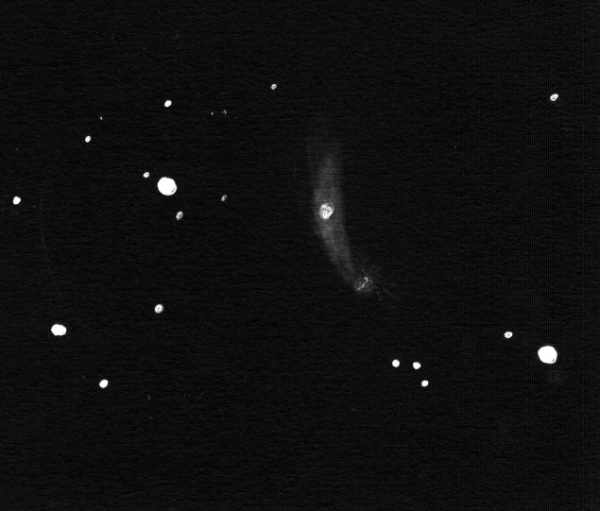
Sketch of NGC 7448 by Dale Holt from his Chippingdale observatory in Hertfordshire. Drawing made on 25 October 2017 using the 505mm mirror and Watec 120N+ Cooled video camera. Located in Pegasus, very close to alpha Pegasi. Quite bright magnitude 11.6, elongate N-S. Described as a spiral with detached segments. I noted a bright nucleus, and a brighter region on the northern tip, down in my drawing. I saw the galaxy as having a slightly curved nature.
I got out again and I was straight onto a rather attractive Arp, 65, a pair of NGC galaxies, just to the mid left of the square of Pegasus.
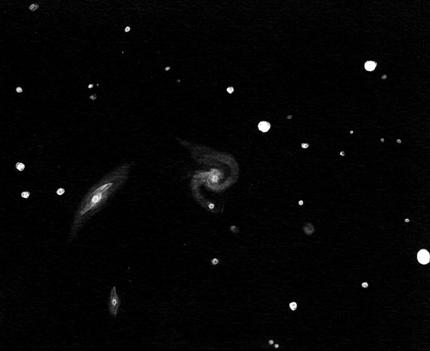
Sketch of Arp 65 (NGC 90 and NGC 93) by Dale Holt from his Chippingdale observatory in Hertfordshire. NGC 90 is the attractive central spiral in my sketch (magnitude 13.6) with NGC 93 to the left (magnitude 13.3).
Tiny companion galaxies lie off projected ends of both spiral arms
. I got some of the companions, but not all of them I'm sure, a good observation though and another Arp tick for me 😃Dale Holt - (28 October 2017).
-
M74 and the Taffy Galaxies
Here are a few sketches I have made this week using the 20" and Watec 120N+ video camera.
M74 was sketched using the 14" back in the 2008-2010 period, this is the first sketch I have made of it using the larger mirror. I'm pleased with the number of Ha regions that jump out at you.
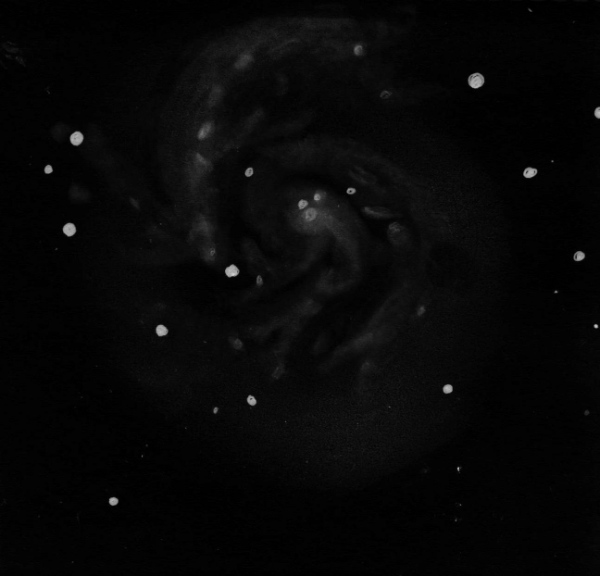
Sketch of M74 showing extensive HII regions by Dale Holt The Taffy galaxies - UGC's 12914 and 12915 - was an exciting first observation.
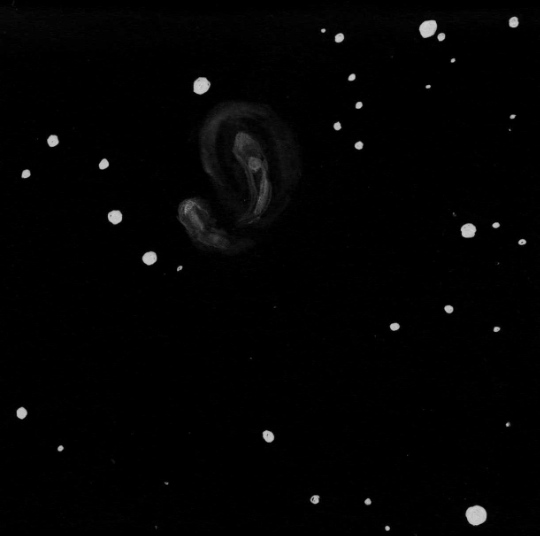
Sketch of the pairing of UGC 12914 and UGC 12915 by Dale Holt Dale Holt - (1 December 2016).
-
NGC 7768 in Pegasus
November’s Galaxy of the Month provided a delightful outing (02/11/2016), struggling against the “clag” of GB skies at NELM of 5.4.
Once I had the scope (20” Dob) pointed at the exact location it was relatively easy to spot the central part of NGC 7768. There was no obvious signs of a bright centre or extended halo.
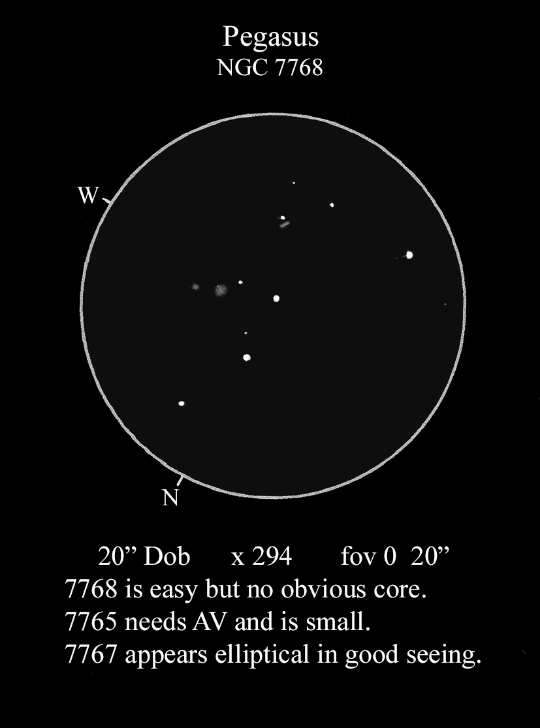
Locating nearby NGC 7765 was somewhat harder being fainter and smaller but AV teased it out from the clag. A magnification of x294 was needed to give sufficient contrast. Despite my best efforts NGC 7766 proved impossible, (I have located it on a good night). NGC 7767 proved relatively easy to detect but I would not like to claim that it appeared elliptical – may be at times in moments of better seeing. On a good night I have seen it as clearly elliptical. I note IC 1511 next door to NGC 7767 is a star – a hint of something (probably clag), also IC 1512 to the South-West, showed a more definite hint of a star/fuzz.
Mike Wood - 3 November 2016
-
STF 3050 in Pegasus
With poor skies during October it was a struggle to find a clear spell to view STF 3050.
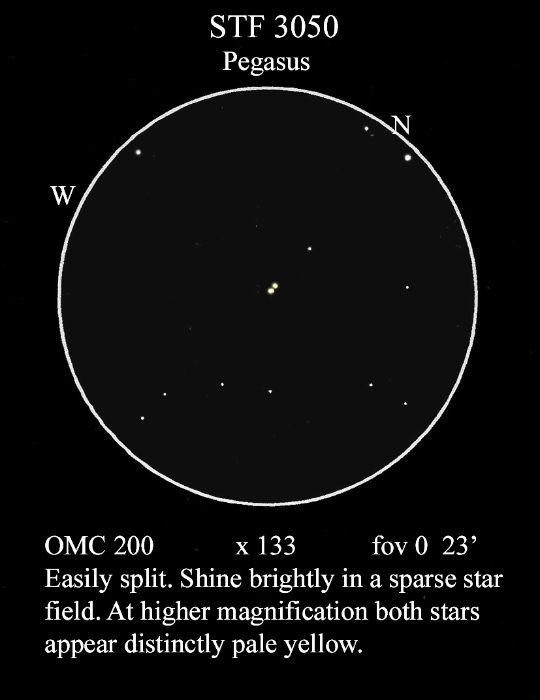
Using the OMC 200 at x133 revealed this sparkling gem of a double. At higher magnification x160 both stars had a tinge of yellow colouration. Component C (mag 12.8) was not able to be detected but on another night I picked it up using the 20” Dob.
Mike Wood - 3 November 2016
-
Double Star AC1 in Pegasus
Next up was the double of the month – AC1. I know a SCT C9 is hardly the scope for doubles but splitting the pair 1.9" was managed at x131 and became clearer at x235. Obviously not tight stars but still very pleasing.
The stars show a yellow tinge. AC1 sits in the middle of three bright stars which includes a lovely orangey/red star to the SW. See the attached sketch that was coloured in Photoshop.
Mike Wood - 19 September 2015
-
Flat Galaxies Hunt
Got out shortly after 10pm on Sunday night and went until 3am!
My skies were reasonable but not the best. I was getting SQM of 21.0 and NELM of 5.5 but they were very damp skies and I suspected them to be going ‘off’ later on in the observing session.
I had no lists planned so decided to go ‘Flat’ galaxy hunting using the Webb Society's latest Flat Galaxy publication, courtesy of Alvin Huey. I always find thin edge on galaxies more difficult than their quoted magnitude. For example UGC 3696, the integral sign galaxy is quoted at mag 13.5 but difficult enough in a 16” scope from a good sky. For tonight I was using my 600mm driven Dobsonian with Argo-Navis.
Anyway, started off with NGC 5777 in Draco. Quite easy with 8mm Ethos (x340); suspected UGC 9570 in same FOV but couldn’t be certain – need a better sky. Just left the 8mm (x340) in for the rest and the Argo-Navis and ServoCat ‘found’ them ☺.
Then the rest as per the attached sketches (click on them for a better view.)
The only one I really struggled with was UGC 11964 near NGC 7241 in Pegasus. It was the only one where I had to hunt down the correct field stars, tried 13E, 8E and 4.7E. Nearly gave up but in the end confirmed it with the 8mm Ethos - but the sky was getting damper by now (0130 BST) although I was still getting 21.0 SQM but then I have had 21.35 from this location.
I then tried for a couple of exotic PN’s but failed – a better night maybe?
Very enjoyable session.
Andrew Robertson - 22 August 2015
